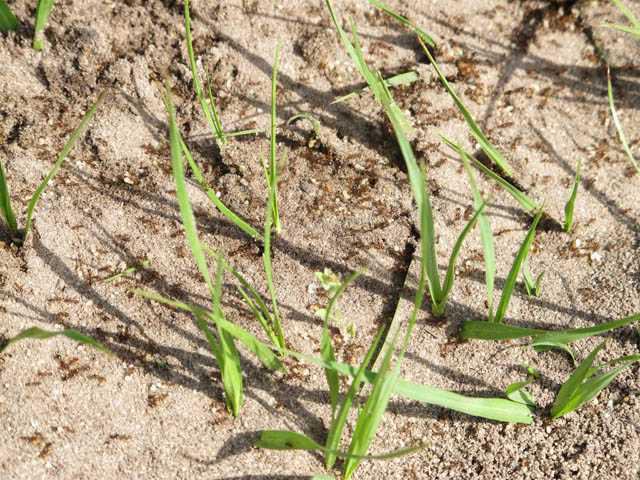Disturbing their mound prompts an attack by hundreds of vicious drones, whose bites leave festering blisters that burn.
That’s why they’re called fire ants, and according to Liberty County Extension Agent Robert Bell, they’ve been a nuisance in the Peach State for nearly a century.
“(Fire ants) were accidentally brought to Mobile, Ala., on cargo ships from South America in the 1920s and 1930s,” Bell said. “The first introduced species was the black imported fire ant. The red imported fire ant came later in the 1930s and displaced the black fire ants. The red fire ant is the one we have in our area. There’s a hybrid offspring of the red and black fire ants that’s also a nuisance pest that populates areas in Mississippi, Alabama and Western Georgia.”
Fire ants have become a nuisance for most of the southern states with some colonies now spreading into Southern California. For some people, however, the insect is more than a nuisance.
According to the Occupation Safety and Health Administration, hypersensitive individuals can react to fire-ant venom with nausea, shock, chest pains and sometimes coma. OSHA recommends those living in fire-ant states remain aware of where they’re standing when outdoors. If attacked, they’re advised to get away from the ant mound immediately while brushing ants off their feet and ankles.
“Understanding the biology of these ants is important,” Bell said, offering advice to homeowners. “Don’t disturb the mound when applying chemicals. When the mound is disturbed, workers move the queen to protected areas. (Also) don’t expect an overnight remedy. Workers eat the food before passing it to the queen. If the queen isn’t killed, your efforts only reduce (ant) population that will quickly rebound since the queen can lay up to a thousand eggs per day.”
Bell said there are a variety of products sold for fire-ant control that can be effective if properly used. Options include ant baits and contact chemicals. Some products are applied to the individual mounds, while others are broadcast over a wider area. Among popular brands effective at controlling fire-ant populations are Ortho’s Orthene Fire Ant Killer and Spectracide’s Fire Ant Killer-Mound Destroyer.
He said most home remedies for killing fire ants have proven ineffective, and some can be dangerous. Home remedies such as soda water, baking soda and vinegar and aspartame may kill some ants but not the queen, he said. Gas, diesel fuel, bleach and ammonia are dangerous to pets and kids and can contaminate groundwater.
Bell said “mating flights” for fire ants are common in the spring and fall, which is why so many fire-ant mounds are appearing. He said the male fire ant dies once it mates, while the female lands, sheds her wings and digs a chamber to start the next colony.
Bell said Georgia attempted to eradicate the unwanted pests in the 1960s and 1970s, but the effort was unsuccessful. He said the chemicals were effective at killing ants, but the ant’s ability to re-invade treated areas, plus the queen ant’s ability to fly up to a mile to start a new colony, doomed the program.
The state and federal governments now concentrate on suppressing the spread of fire ants and other invasive pests through quarantine programs conducted by agricultural agencies; however, budget restraints have hindered those efforts.
For more information, go to www.extension.org/pages/9725/geographic-distribution-of-fire-ants.
Fire ants are more than a nuisance


Sign up for our e-newsletters